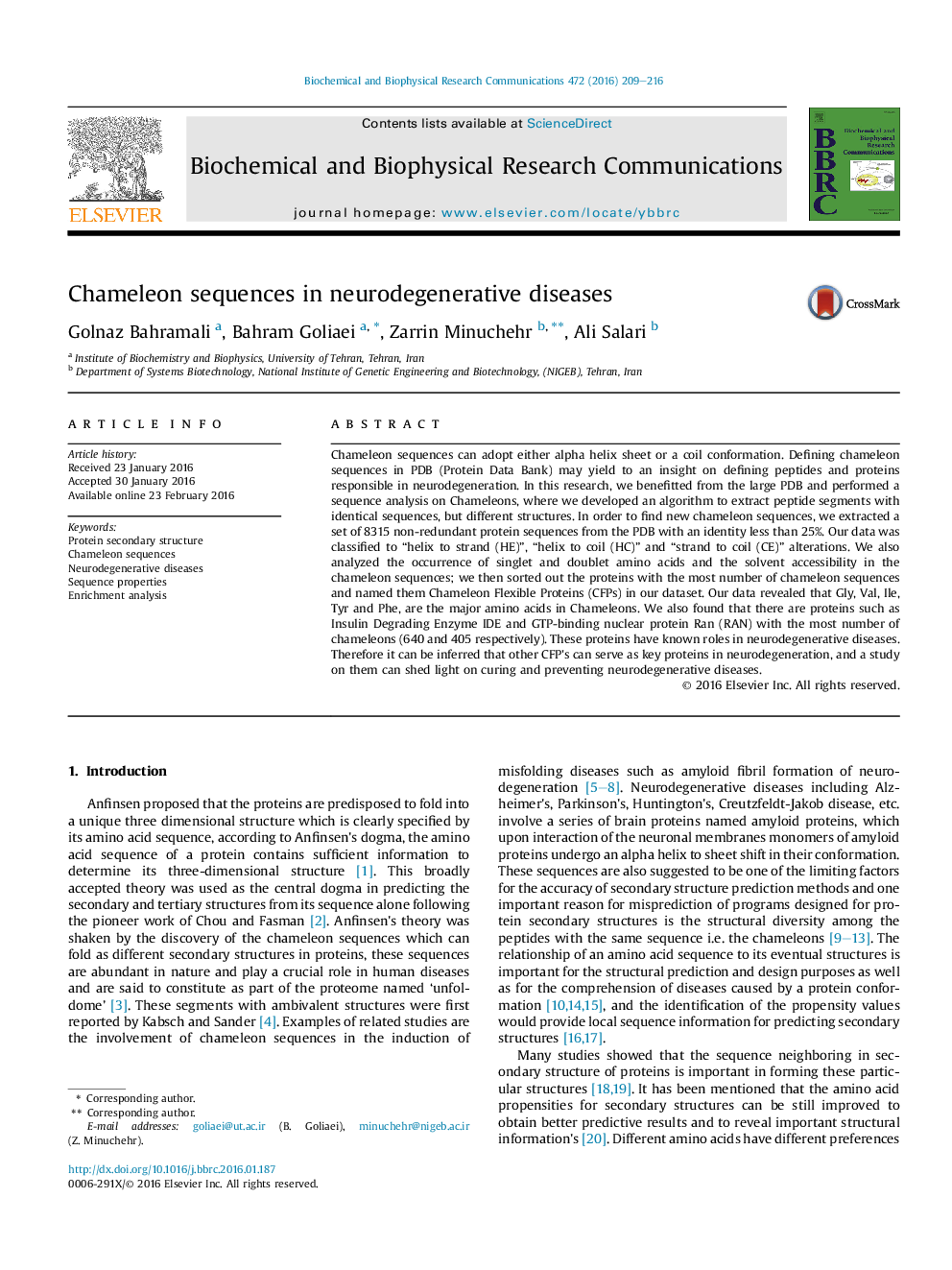| کد مقاله | کد نشریه | سال انتشار | مقاله انگلیسی | نسخه تمام متن |
|---|---|---|---|---|
| 10748633 | 1050276 | 2016 | 8 صفحه PDF | دانلود رایگان |
عنوان انگلیسی مقاله ISI
Chameleon sequences in neurodegenerative diseases
دانلود مقاله + سفارش ترجمه
دانلود مقاله ISI انگلیسی
رایگان برای ایرانیان
کلمات کلیدی
موضوعات مرتبط
علوم زیستی و بیوفناوری
بیوشیمی، ژنتیک و زیست شناسی مولکولی
زیست شیمی
پیش نمایش صفحه اول مقاله

چکیده انگلیسی
Chameleon sequences can adopt either alpha helix sheet or a coil conformation. Defining chameleon sequences in PDB (Protein Data Bank) may yield to an insight on defining peptides and proteins responsible in neurodegeneration. In this research, we benefitted from the large PDB and performed a sequence analysis on Chameleons, where we developed an algorithm to extract peptide segments with identical sequences, but different structures. In order to find new chameleon sequences, we extracted a set of 8315 non-redundant protein sequences from the PDB with an identity less than 25%. Our data was classified to “helix to strand (HE)”, “helix to coil (HC)” and “strand to coil (CE)” alterations. We also analyzed the occurrence of singlet and doublet amino acids and the solvent accessibility in the chameleon sequences; we then sorted out the proteins with the most number of chameleon sequences and named them Chameleon Flexible Proteins (CFPs) in our dataset. Our data revealed that Gly, Val, Ile, Tyr and Phe, are the major amino acids in Chameleons. We also found that there are proteins such as Insulin Degrading Enzyme IDE and GTP-binding nuclear protein Ran (RAN) with the most number of chameleons (640 and 405 respectively). These proteins have known roles in neurodegenerative diseases. Therefore it can be inferred that other CFP's can serve as key proteins in neurodegeneration, and a study on them can shed light on curing and preventing neurodegenerative diseases.
ناشر
Database: Elsevier - ScienceDirect (ساینس دایرکت)
Journal: Biochemical and Biophysical Research Communications - Volume 472, Issue 1, 25 March 2016, Pages 209-216
Journal: Biochemical and Biophysical Research Communications - Volume 472, Issue 1, 25 March 2016, Pages 209-216
نویسندگان
Golnaz Bahramali, Bahram Goliaei, Zarrin Minuchehr, Ali Salari,